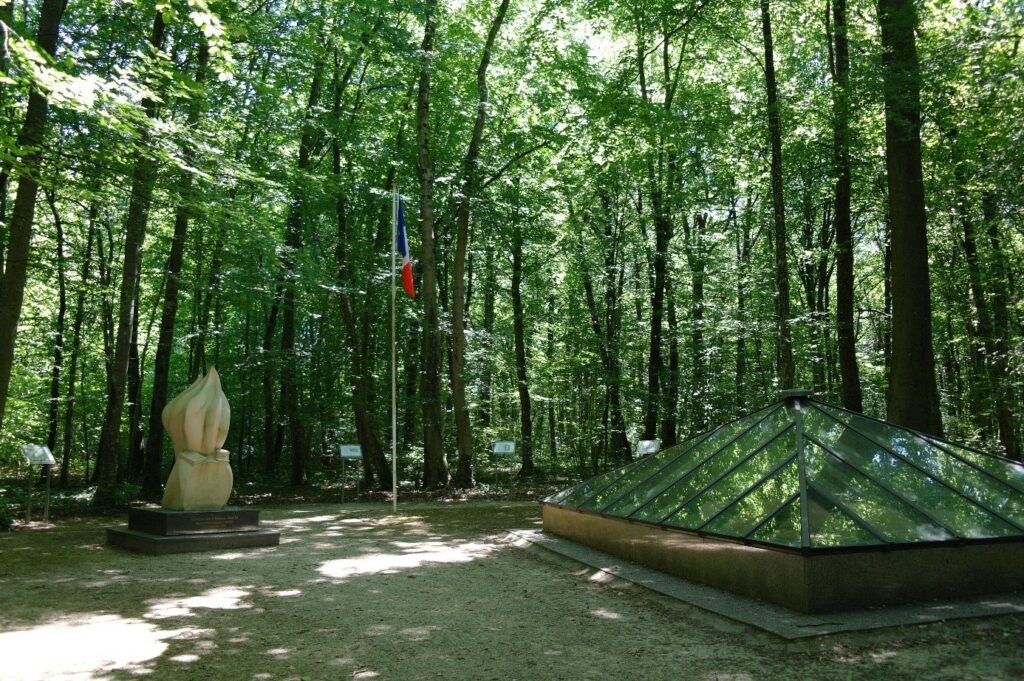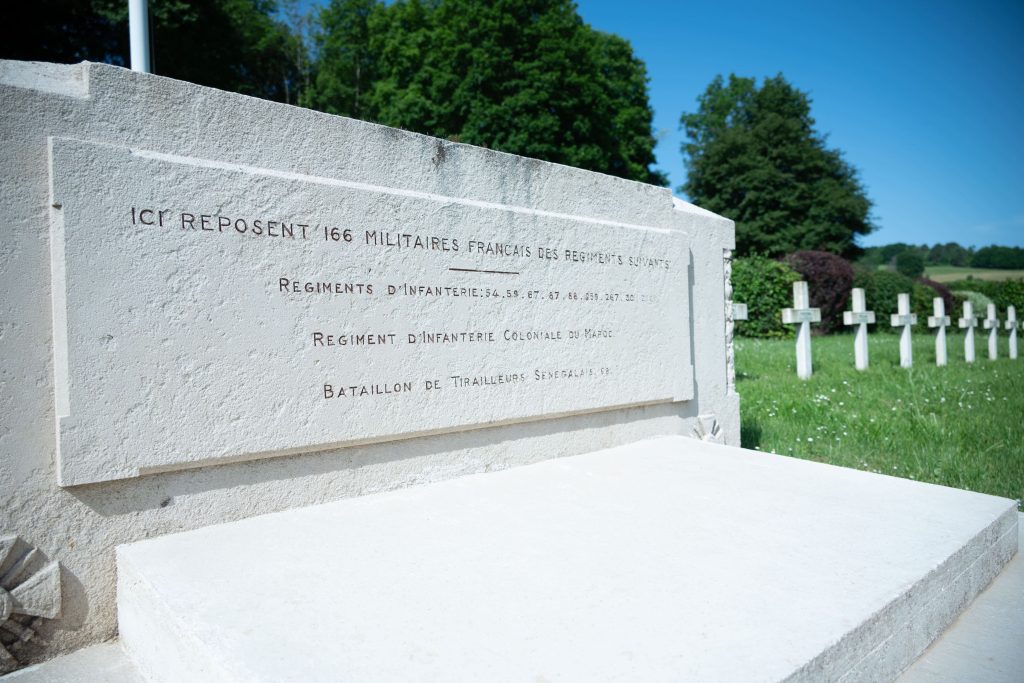The Éparges Ridge is located about twenty kilometers southeast of Verdun, on the edge of the Hauts-de-Meuse. It is one of the most advanced observatories on the Woëvre Plain, culminating at 350 meters. It offers an exceptional panorama that dominates the Quanottes Ravine to the west, controls the Crête de Combres Pass in the center-south, and finally watches over the Woëvre Plain to the east. The French Cemetery of Trottoir is located at the foot of this ridge. It is located in the national forest, where many other memorials are.
From September 21, 1914, the Germans developed a strong organization of blockhouses and trench networks on the Eparges Ridge. The task of reconquering the area was entrusted to the 12th Infantry Division, in which the writer Maurice Genevoix served. However, the recapture remained incomplete. The general offensive resumed on March 18, 1915, and was very deadly. From mid-April onwards, mine warfare began and lasted until September 1917. These mines created spectacular craters, 18 of which are still visible today. The French lost 50,000 men, while the German losses were about the same.

Created in 1915, this graveyard does not collect all those lost in the battle. In fact, soldiers were also buried in small scattered cemeteries and isolated battlefield graves. The large cemetery known as the “Bois des Éparges” in 1915, as well as the one in the Sonvaux Ravine, disappeared entirely during the bombing. The latter were found after the war, thanks to the information provided by former military chaplains. About 200 identified bodies were then repatriated by their families. The unidentified bodies found on the ground and those exhumed from the mass graves were then buried in the four large ossuaries at the central point. After this arrangement was made in 1922, nearly 900 bodies were found in mass graves in the Ravin de la Mort. A new extension of the cemetery followed in 1924.
The unidentified bodies were transferred to the Douaumont Ossuary in the “Les Éparges” vault. This move provoked strong reactions from the families who thought the State wanted to abandon the cemetery, but this rumor was later denied. In fact, the graveyard was rebuilt in 1958 and then renovated in 1993. Finally, between 2005 and 2007, the central monument was rebuilt identically in Euville stone.
Every Easter Monday, the traditional ceremony commemorating the fighting at Les Éparges takes place. The writer Maurice Genevoix, a veteran of Les Éparges, visited every year until he died in 1980. He paid his respects at the grave of his friend, Robert Porchon, killed in February 1915. Les Éparges is at the heart of Maurice Genevoix’s literary work in “Ceux de 14” and of the German writer Ernst Jünger’s book, “Storm of Steel”.
Since the 1990s, the Verdun Memorial has organized “Genevoix classes .” These classes encourage students to discover this significant site in the history of the Great War through documents, testimonies, and field visits that leave no one feeling indifferent.

Louis Pergaud was a writer who also died in this area. On April 6, 1915, his regiment launched an attack against the German lines (attack against Marchéville-en-Woëvre – hill 233) in the Éparges near Verdun. At the end of this offensive, he was reported missing.
He was trapped in the barbed wire and shot several hours later. German soldiers came to his aid and took him and some of his comrades to a temporary hospital in Fresnes-en-Woëvre. Unfortunately, the hospital was destroyed by a French army barrage on April 8. Although their bodies were never found, Louis Pergaud and many of his compatriots were among the victims.
When he died, he was the author of a single book: “Le Grand Meaulnes”, which had just been published in 1913. Nevertheless, it was recognized at the time and became a classic of teenage reading, and was included in the national education curriculum for many years. Today, this work continues to mark its readers by the appeal that emanates from it.
After the war, Alain-Fournier’s disappearance remained a mystery for decades. However, intense research by enthusiasts finally led to his discovery in 1991. This discovery marked an essential step in the birth of archaeology of the Great War as a discipline in its own right.
On the edge of the Calonne Trench, in a clearing, we find the empty pit where the bodies of the soldiers who fell in battle on September 22, 1914, are now represented by steles. The perimeter of the archaeological excavation carried out in 1991 is covered by a glass pyramid. This pyramid protects the location of the exhumed bodies of the soldiers of the 288th infantry regiment. Their remains were later transferred to the cemetery of Saint-Remy-la-Calonne.

Next to the glass pyramid, you will find the work of local artist Henri-Patrick Stein. It represents a massive stone flame of remembrance. At the base, a volume of “Grand Meaulnes” and the helmet of Alain-Fournier, bearing the number of his unit, are sculpted.
Mine warfare marked the landscape with explosion craters still visible today. Louis Pergaud, the author of “La Guerre des boutons” (The War of the Buttons), lost his life there in 1915. Unfortunately, his body was never found.
Other monuments accessible to visitors pay tribute to the dead, for example, the Memorial of the Engineers, the Monument of the point X and its panorama, the Monument of the Rooster, etc. Also, at the foot of the hill lies the French graveyard of the “Cimetière du Trottoir .” The bodies of the soldiers who were found there, including that of Alain Fournier, rest in the glass pyramid of the Calonne forest.
